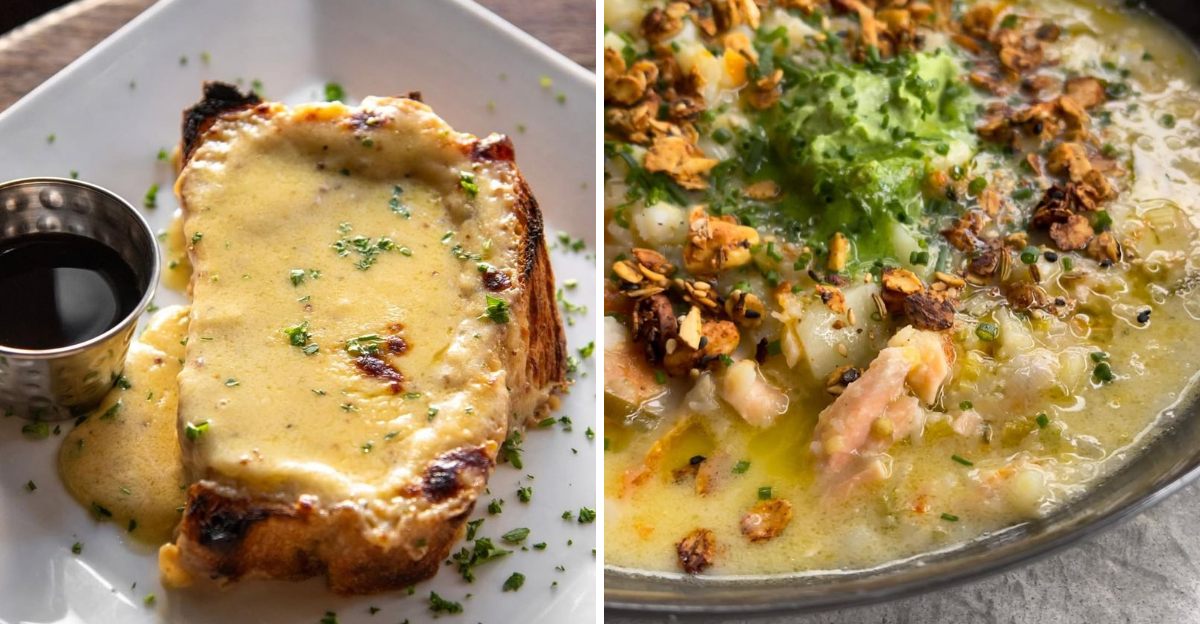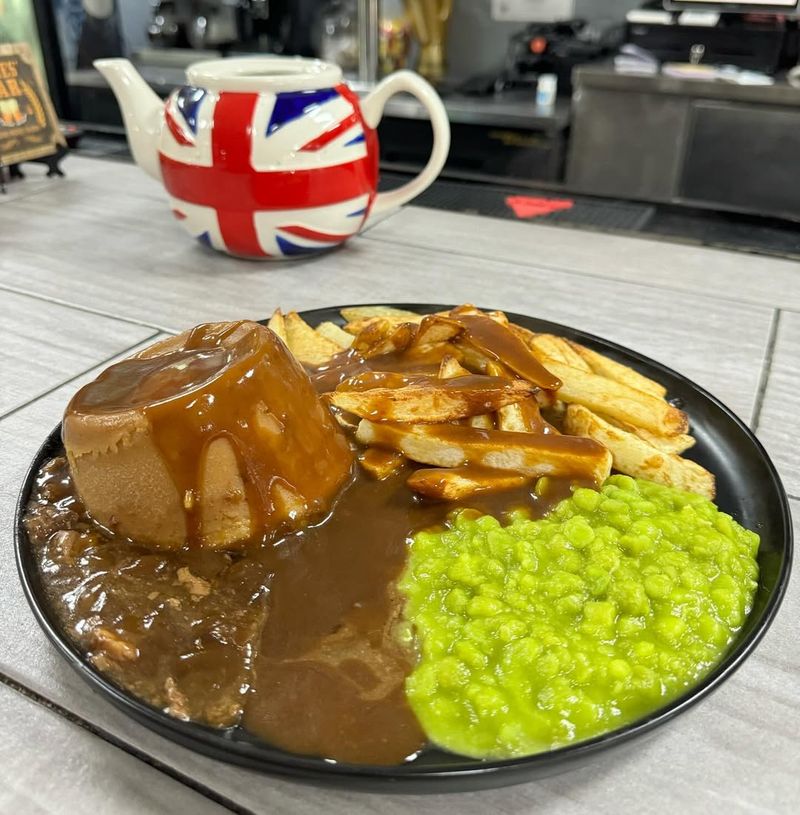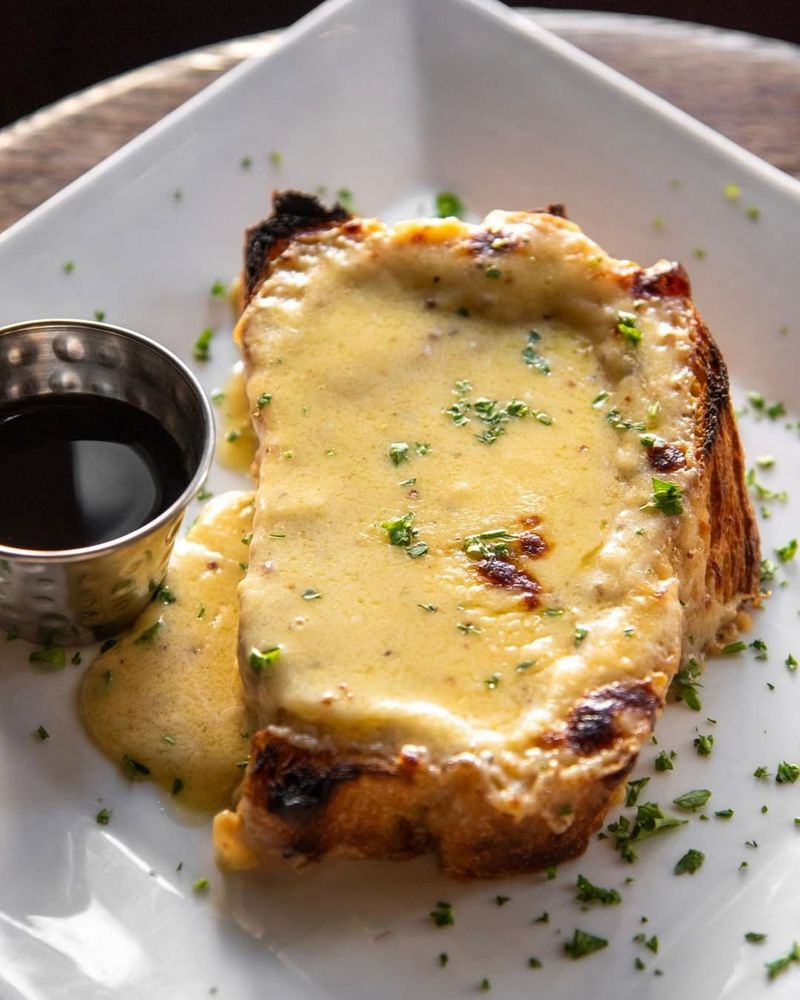The 7 Traditional British Dishes At Risk Of EXTINCTION

Traditional British cuisine is losing its charm with the younger generation, leading to certain cherished dishes facing the threat of extinction. These culinary delights, once staples in households across the country, are being replaced by more contemporary and global tastes. In this post, we explore seven such dishes that are at risk, shedding light on their history, ingredients, and what makes them unique. Let’s celebrate these flavors and understand why they deserve a place on our tables.
1. Steak and Kidney Pudding

Steak and Kidney Pudding is a classic British dish that finds itself on the brink of extinction. This savory pudding is made with a suet crust pastry filled with diced beef, kidneys, and a rich gravy.
Often steamed for hours, it offers a hearty and warming experience. Traditionally served with mashed potatoes and peas, its decline in popularity is attributed to its time-consuming preparation.
Embrace this dish by trying a simplified recipe at home, savoring the intricate flavors and textures that it brings to the table. A true taste of British heritage.
2. Lancashire Hotpot

The Lancashire Hotpot is a comforting stew with roots in the industrial heartland of England. Layers of lamb and onions are cooked slowly under a topping of sliced potatoes until tender.
Known for its simplicity, it was once a popular choice for working families. However, modern fast-food trends have overshadowed this dish.
Rediscover its charm by preparing it on a chilly evening, enjoying the aroma as it fills your kitchen. This dish remains a testament to resourceful cooking during hard times, offering a slice of history with every bite.
3. Roly-Poly Pudding

Roly-Poly Pudding, often referred to as Jam Roly-Poly, is a nostalgic British dessert. This pudding is made by spreading jam over a suet pastry, rolling it up, and steaming or baking it to perfection.
With its sweet and sticky nature, it was a favorite among children. The decline in homemade desserts has led to its rarity on modern menus.
Rekindle childhood memories by crafting your own Roly-Poly, experimenting with different fillings. Its simplicity and sweetness offer comfort and a reminder of the past’s uncomplicated pleasures.
4. Faggots

Faggots are a traditional meat dish made from offal, mixed with herbs and spices, and formed into patties. Once a staple in the British diet, they are now rarely seen in typical households.
This dish’s decline is partially due to changing tastes and a move away from offal-based meals. However, faggots offer a rich flavor and are a testament to traditional cooking methods.
By embracing this dish, you can reduce food waste and enjoy a distinctive taste. Try pairing it with mashed potatoes and gravy for a classic British meal.
5. Welsh Rarebit

Welsh Rarebit is a savory dish that elevates cheese on toast to an art form. The cheese sauce is typically made with a mixture of cheddar, mustard, and ale.
While once a popular choice for a quick meal, its consumption is dwindling as simpler cheese toast options prevail. Yet, its unique flavors offer a gourmet twist to a humble snack.
Celebrate this dish by preparing it with quality ingredients, enjoying the rich, melted cheese as it complements the crisp bread. It’s a culinary experience that transports you to a cozy British kitchen.
6. Pearce Duff’s Blancmange

Pearce Duff’s Blancmange is a classic British dessert that’s becoming less common in today’s dessert offerings. It’s a milk-based pudding, flavored and set into molds.
Once a regular feature at gatherings, its popularity has declined with the rise of more contemporary sweets. Its unique texture and nostalgic appeal make it worth preserving.
Recreate this dish by using traditional molds and flavors, experiencing a taste of British culinary history. Its smooth texture and subtle sweetness provide a delightful end to any meal.
7. Cullen Skink

Cullen Skink is a hearty Scottish soup made with smoked haddock, potatoes, and leeks. This dish has deep roots in Scottish culinary traditions but is at risk of disappearing.
Known for its creamy texture and robust flavor, its decline is linked to the decreasing availability of traditional ingredients. However, its rich taste offers a warming embrace, perfect for cold days.
By trying this soup, you engage with a piece of Scottish heritage, savoring the smokiness and comfort it brings. It’s a forgotten delight that deserves revival in modern kitchens.
